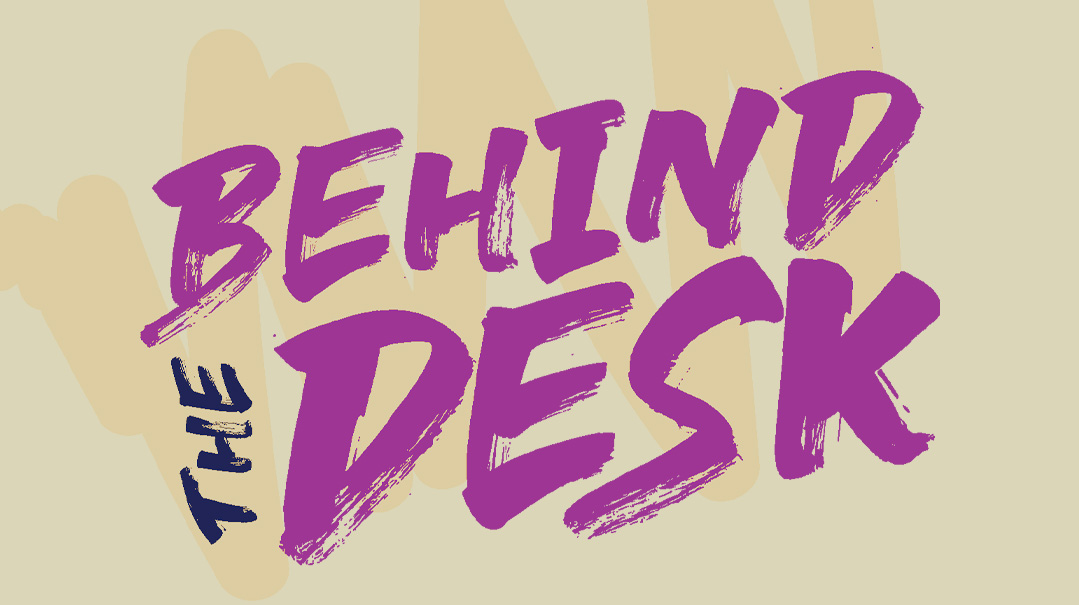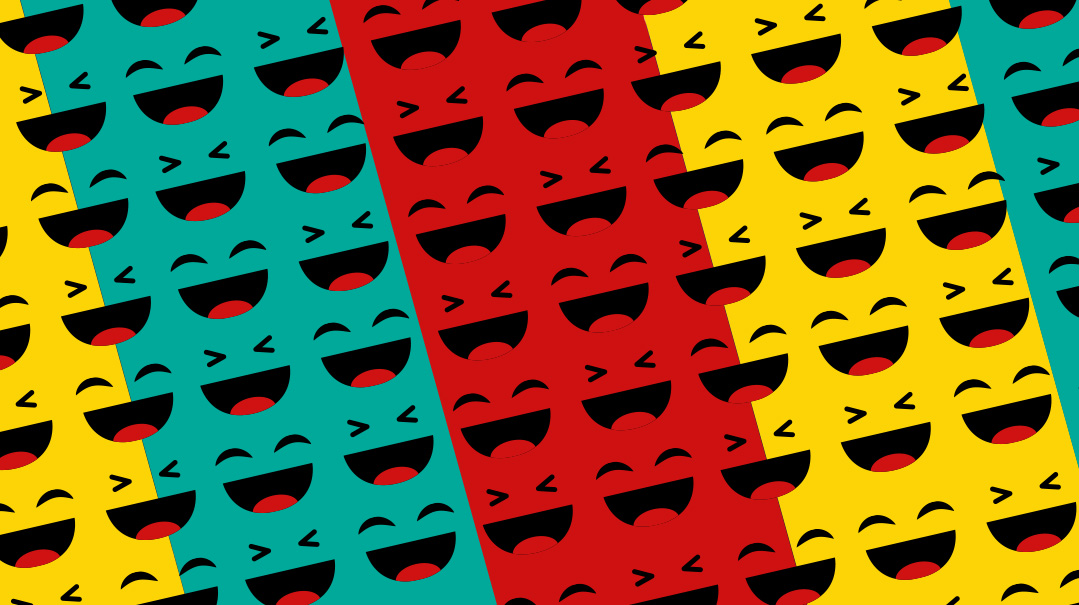All Dressed Up
| April 11, 2022Fast-forward a decade or two. Finding a long-sleeve T-shirt is no longer a treasure hunt. Our local stores are bursting with options

Ever wondered about the making of the stylish and modest clothing that fill rack after rack in hundreds of frum clothing stores? In honor of the pre-Pesach shopping rush, one of the busiest shopping seasons, Teen Pages went behind the scenes to get the backstory!
Then & Now
Back in the dark ages when your mother (or maybe even your sister who’s 15 years older than you) was a teen, the frum clothing industry was vastly different. Before camp, teens shopped in malls, combing racks to find that elusive long-sleeve tee. Bonus points if the neckline worked! Long skirts found in the department stores were real treasures! There were modest options in the Jewish stores, but the selection was nothing like there is today.
Fast-forward a decade or two. Finding a long-sleeve T-shirt is no longer a treasure hunt. Our local stores are bursting with options.
Alisa Mendlowitz, co-owner of Brenda’s, has been working in the clothing industry for 42 years. Alisa’s mother, Brenda, began selling “dry goods” (socks, towels, and other basics) but shifted toward women’s clothing because that’s where she felt the need was. (She had four girls, so it worked out well.) She opened one of the first women’s designer clothing stores in the frum world. Today, her daughters have taken over.
“I attended BYA High School because it was across the street from the store,” says Alisa. (Yes, she chose a high school based on its proximity to Brenda’s!) “I began working in the store when I was 12. I worked there after school every day, on Sundays and Fridays, often helping my teachers shop!”
From her viewpoint of four decades in the industry, Alisa shares how the business has changed.
“So many frum clothing companies have opened over the last ten years,” says Alisa. “There’s a lot of competition. Right now the consumer is in the driver’s seat; they are able to get good prices and good selection. Today it’s easier than ever to look refined and put-together. You can find clothing that is tzniyus, trendy, and flattering. The selection is fantastic.”
“It used to be that there were only a handful of manufacturers,” adds Esther, the owner of Brooklyn Southwest in Lakewood. “And now there are lots of companies with all different price points.”
Aside from the niche frum clothing companies, other companies have also been catering more to the frum clientele.
“These companies recognize that frum Jews, especially in New York, are a big part of the market. In the secular world it’s all about leisure; especially since Covid, people aren’t going out as much. They’re wearing sweatsuits and sneakers. How often do they dress up? Hardly ever. Frum Jews, on the other hand, are dressing up for Shabbos, Yom Tov, and simchahs. Many of the better companies are making dresses with different lengths and providing extra fabric for the frum consumers. The company Theory, for example, makes some of their skirts with longer lengths.”
“It also helps that over the past few years midi skirts are in style even in the non-Jewish world, so that makes it so much easier to find fashion with our non-Jewish manufacturers,” adds Esther.
How have the shoppers changed over the years?
“The world became more affluent over the years, and the fashion industry took off in the frum world,” says Alisa. “Since there’s a lot available, people started becoming ‘shoppers.’ Baruch Hashem, there are many large families today, and simchah wear is more in demand.”
A Dream Come True
Are you interested in running a fashion business?
“Be persistent,” says Chani Wolf, CEO of the Pashmina Collection. “People often ask me, ‘How did you have the guts to start a clothing company?’ The answer is, I was a bit impulsive and jumped in! I thought to myself, What could possibly go wrong? It also helped that my husband was completely on board. He really believed in me.
“At the time I opened my company, Pashmina Collection, I was also the director of finance for a health-care company. At first, I attempted to manufacture baby stretchies, but nothing came of it. Then I saw another frum company start out, so I said to myself, ‘I have to figure this out!’ I decided to try manufacturing maxi dresses, fashionable robes for Friday night. I spoke to a friend in the industry and she shared some helpful information about the basics of manufacturing. I also joined an online forum and got some names of manufacturers.
Everyone told me that we had to go to the garment district in New York City. So on Thanksgiving, when I had the day off from work, I decided to go. My husband and I were roaming around the streets on a frigid winter day. I had no clue what I was doing or where I was going! I remember some random people following us because they figured we knew what we were doing, but it was totally the blind leading the blind! After a while, I realized that everything, besides one Indian beading store, was closed for Thanksgiving. I got nowhere from the trip, but I didn’t give up.
I made some more connections and finally found a factory to work with. I brought in some inspiration samples of pieces that I wanted to manufacture. The manufacturer said to me, “Oh, this is what Jewish women wear on Friday night!”
I was amazed that she knew that. I took it as a sign — I can do this! Eventually, I found a better manufacturer and started branching out into other clothing items besides maxi dresses.
Then I had to get the stores to buy my maxi dresses! Pashmina Collection was a pioneer in frum fashion. The idea of maxi dresses was totally new.
I went to 50 stores and begged them to carry my products! I remember walking up and down the streets of Boro Park, waiting for hours to speak to the store owners, and then trying to convince them that people really did want my maxi dresses.
It wasn’t easy, but I’m very stubborn, and I really believed in my product. Also, my husband was very supportive. He kept saying, “We’re going to do this and make it work!” I knew that people wanted it. I just had to convince them to make it available to the customers!
Finally, the newer stores caught on. They realized that there was a demand. Baruch Hashem the maxi dresses sold very nicely (I am grateful to my first customers, but I’m sorry that those first dresses weren’t that pretty!), and we were able to expand to the full clothing line.
Always remember that Hashem is in control. Manufacturing clothing can be a very humbling experience. Just when I think that I’ve finally figured something out, some other issue crops up. All I can do is try my best and leave the rest up to Hashem!
Not every story has a happy ending, but it’s the ending that was designed by Hashem.
From Design to Dress
Chani explains the design and manufacturing process:
- Design: Many months in advance of each new fashion season, I sit down with my design team. I always ask, what do we want to be wearing this season? It’s not theoretical. It’s what I actually want to wear. I specifically have a few designers so I get a broader perspective.
We adopt new styles based on the items we know that people have loved, and we get inspiration from the general fashion industry. The frum community has its own set of trends, based on key world trends.
- Test Fabrics: We test fabrics before we create the samples. Fabrics are sourced from Asia and Europe. I’ve learned which fabrics work well for which styles. Every fabric gets washed in my own washing machine. I want it to not only look beautiful, but wash beautifully. In order for it to really look great and last for years, it has to wear and wash well.
- Create Samples: Sample items are created. Some samples are ugly, and they get knocked out right away. Some make it to the next stage.
- Revise: Many rounds of revision are made. I obsess over every item and tweak the samples a million times! Hours are spent dissecting every measurement, the durability of the item, the fit, how easy it will be to get on and off, will it get makeup stains on it when pulled off? We also consider how well the item washes and irons.
On any random day, you may find me walking around in one of my samples. But I will only wear samples that I love!
- Ready for orders! Finally, when we get samples that we are happy with, we show them to the stores and they place orders.
- Sizing: A pattern maker turns the items into a size chart that tells the factory how to make the garment. Our size charts were developed based on nine years of customer feedback.
- Manufacturing: Items are manufactured and created in a factory.
- The add-ons need to be made and ordered. This includes the size tags, buttons, zippers, and care labels.
- Shipping: Everything is packaged and delivered to our warehouses, though we often experience quite a bit of drama with international shipping, especially since Covid hit.
- Delivery: Once everything comes in, it’s delivered to the stores and put up on the website.
- Feedback: This my favorite stage! It’s an emotional experience to see your clothing being worn. Sometimes I literally have tears in my eyes when I go out on Yom Tov and see someone wearing a dress from my line. It’s an amazing feeling to bring joy to someone’s Yom Tov.
Prediction Time!
I always think that I know what the hot sellers will be, but there are many surprises. I am not a navi! Every season there’s that one item I think will be amazing that falls flat.
Once, a dress arrived at the warehouse and I saw a terrible mistake — the wrong color zipper ended up on the dress. I was horrified. The zipper totally clashed with the dress, and the worst part was that there was nothing to do about it. It was too late.
I was sure that the stores would be upset. But with nothing else to do about it, I just had to send the dresses with the clashing zippers to the stores. Two days later, they were completely sold out. Everyone said, “Wow! Pashmina is so ahead of the trend. Look at that sharp contrasting zipper!” All I can say is that Hashem is in charge!
—Chani Wolf, Pashmina Collection
In the summer season, customers love maxi and midi. They’re comfortable and easy. I don’t think that dolman tops will ever go out of style! Matching tone-on-tone and matching two-piece Shabbos outfits are also strong sellers.
As far as weak items, straight skirts are definitely not strong these days, as well as basic A-line short black skirts. Pleats in all styles have taken over.
—Esther, Brooklyn Southwest
Points to Ponder
Based on Penimi’s Junior High School Tzniyus Curriculum
While I think everyone would agree that we are more than our physical bodies and have deeper layers than the superficial description of ourselves, sometimes we still struggle to define who we are.
Probably one of the biggest challenges in trying to define ourselves is being blinded by what others think. For example, if I have a part in the school play and get a lot of compliments, I feel great. If I don’t get compliments, I doubt my performance. I’m basing my feelings about myself on others’ opinions. Or we’ll make decisions about where to go, or what to wear, based on what others will think or say, without even giving much thought if it is right for us. This is very hard to overcome because it’s so normal to want to please others and look good in their eyes. Sometimes it can help to say to yourself: “If ________ were out of the picture, what would I do/wear/be like?”
Unless we work on it, these attitudes don’t magically change when we get older. We all tend to spend a lot more time and thought about the outside stuff and most people associate themselves lot with their outside, or the stuff they have, but in reality, mankind is special because we are made of two parts. A guf and a neshamah. Without a guf, we would not be able to live here in This World. Hashem gave us a guf to help us do what we need to do in This World — so while our talents, achievements, and stuff are part of understanding who we are on a deeper level — they are not the totality or definition of our identity.
So, who am I? We are not meant to negate our external, but rather to place the correct emphasis on the internal, using the external as ways of enhancing, rather than replacing, our inner core.
©Penimi
Tips from the Pros
Alisa from Brenda’s says:
Be open-minded, and try things on! I always say, we don’t charge for trying things on! Teens don’t always have the finesse to see the big picture. Sometimes I have to practically force girls to try things on, but afterward they thank me.
Listen to your mother! Mothers want their children to look their best.
You want to buy something trendy, but make sure it works for you. Don’t worry about what your friends are wearing; know what looks good on you. The most important thing is that clothing should be flattering. The actual style is not as important. It’s all about looking and feeling good.
We have become a disposable society with girls wanting lots of new clothing each season. But it’s worthwhile to invest in quality. Buy one less and one better. Basics, such as a good black skirt or cardigan, are worth spending on.
Don’t try too hard. People are always asking me, “How many pieces did you bring in? Is it one of a kind?” The mother of a chassan once traveled to Europe to buy special fabric for her gown. Then she walked into the wedding hall and saw that the tablecloths were made with the same exact fabric!
Esther, from Brooklyn Southwest advises:
Be confident. Develop your own sense of style even if it might not be “in.”
Dress in the colors that suit your color palette — it makes you come to life. Build your wardrobe carefully. A closet full of clothing isn’t worth much if they aren’t wearable. I suggest having a few really good closet staples that are interchangeable, almost like a closet capsule.
Peer pressure is very strong. Tzniyus can be a challenging mitzvah. Some shoppers come in wanting what their neighbors, sisters, and cousins are wearing. But there’s no reason you can’t feel good and beautiful. Everyone has a different body shape, and we try to dress each customer as an individual.
Chani, from Pashmina Collection, suggests:
Find styles that are flattering for you, and wear those styles. Ninety percent of looking great is figuring out what is flattering for you. The rest is easy!
Listen to your mother! She knows what looks good on you!
Memorable customers:
Esther, owner of Brooklyn Southwest, shares some of her most memorable customers:
A customer once came in to buy a lot of clothes, and we knew she didn’t have any daughters. She was buying it for girls in the community who needed clothing.
A customer once lost her own skirt while trying on clothing during the busy season, and we had to search through piles of clothing to find it.
A customer once saw how hard the sales help worked and brought coffee slushies for the staff!
We’ve grown close to some of our customers and have even attended their simchahs!
A customer accidentally went home with an envelope from the counter that contained someone’s paycheck. We had to check the cameras to track her down!
(Originally featured in Teen Pages, Issue 907)
Oops! We could not locate your form.







